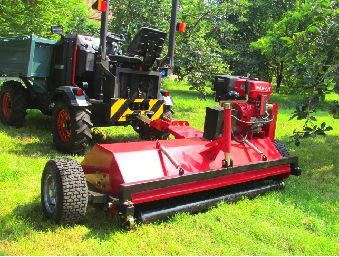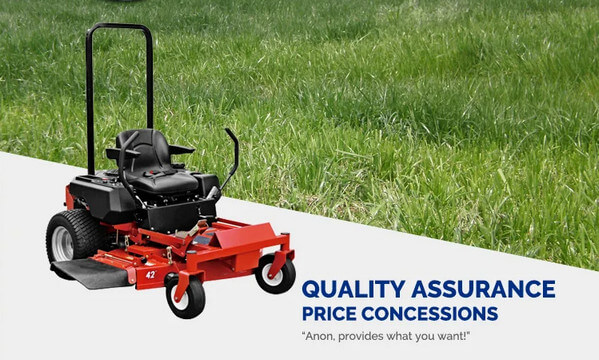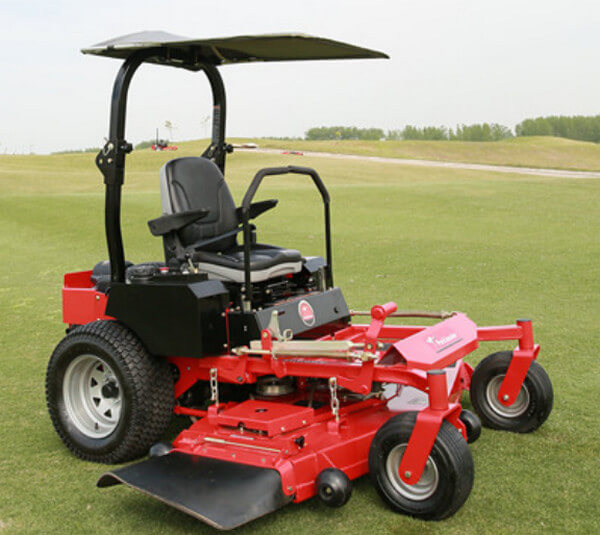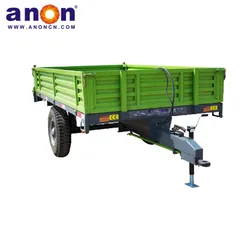Introduction
Maintaining your lawn is very important. If you choose an unsuitable lawnmower, the job will be unpleasant. On the other hand, picking the right lawn mower will make the job easier and more enjoyable. In this article, I’ll explain the different types of lawn mowers and what you need to consider when choosing one, to help you pick the best mower for your needs.
Types of Mowers
Self-propelled Lawn Mower
A self-propelled lawn mower has powered blades, so you only need to push it forward. It’s easier to use, has a smaller cutting width, and can handle uneven ground.

Self-propelled Lawn Mower
Riding Lawn Mower
The riding lawn mower lets you sit while you operate it. It cuts grass quickly, has a wider cutting width, and leaves your lawn smoother.
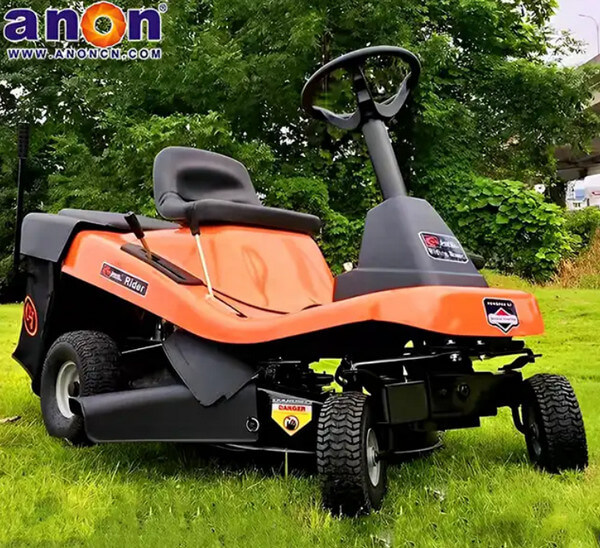
Riding Lawn Mower
Zero-Turn Lawn Mower
A zero-turn lawn mower can turn 360 degrees on the spot. It can handle tight spaces and complex terrain and works well on uneven or tricky ground.

Zero-turn Lawn Mower
Tractor Finishing Mower
A tractor finishing mower has powerful blades, but the blades and shaft are designed to avoid obstacles. This makes it safer because it can handle hitting hard objects without damage.
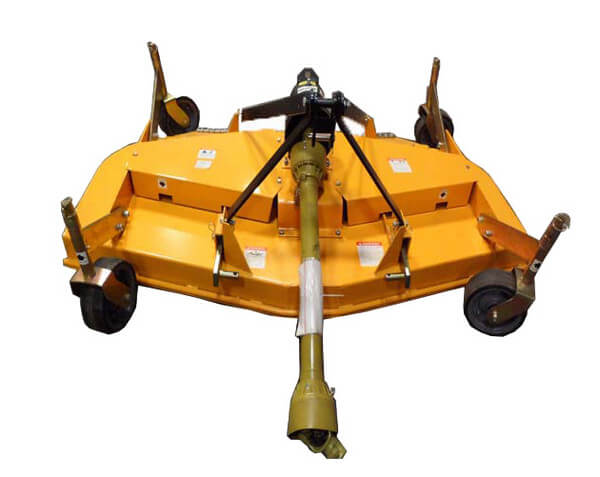
Tractor Finishing Lawn Mower
Robotic Lawn Mower
A robotic lawn mower works automatically. You only need to control it remotely using an app; it can work on its own. The robotic lawn mower is within a set area by itself. When it rains or the battery is low, it will automatically return to its charging station to recharge or avoid the rain.
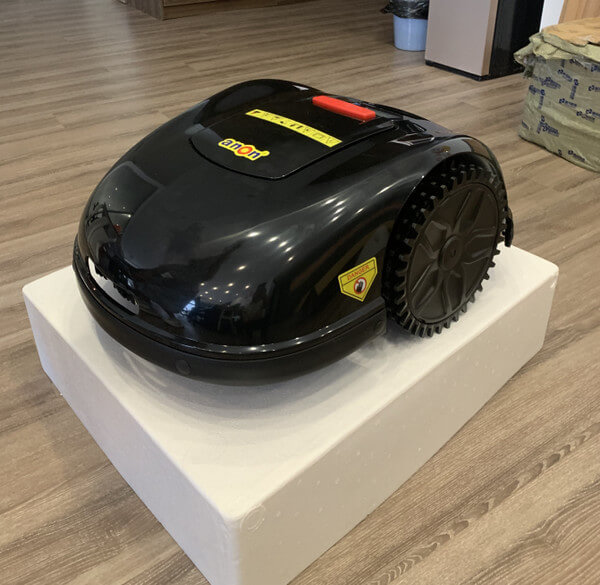
Robotic Lawn Mower
Factors to Consider When Choosing a Mower
Lawn Size
When buying a lawn mower, the size of your lawn is very important. If your lawn is small, you can choose a self-propelled lawn mower, which is lighter and easier to use. For medium to large lawns, you should go for a riding lawn mower, a zero-turn lawn mower, or a robotic lawn mower, as these are more efficient and cover more area.
Terrain and Obstacles
The second factor to consider is the terrain and obstacles on your lawn. If your lawn is flat, a robotic lawn mower will work fine. If the lawn has slopes or uneven ground, you should choose a self-propelled lawn mower, a zero-turn lawn mower, or a riding lawn mower. These mowers offer better stability and traction. For areas with many obstacles, a tractor finishing mower is the best choice.
Grass Type
If you need to mow soft, regular grass, you can choose a self-propelled lawn mower, riding lawn mower, zero-turn lawn mower, or robotic lawn mower. If you need to work in areas with shrubs in the wild, a tractor-finishing mower is a better choice because it performs well in those conditions.
Cutting Height
The height of the grass left after mowing is also important. You can check the mower’s specifications for this information. The cutting height depends on the lawn’s use: for regular lawns, a height of 4-8 cm is typical, and you can use a self-propelled lawn mower or riding lawn mower. For sports fields, the height should be lower, around 2-3 cm, so a riding lawn mower, zero-turn lawn mower, or robotic lawn mower is best. For grass used to stabilize soil or prevent erosion, the height should be over 10 cm, making a tractor finishing mower the right choice.
Handling Grass Clippings
You can also choose a mower based on how it handles grass clippings.
Bagging
The mower collects the grass clippings in a bag. This helps the grass continue to grow well by allowing it to carry out photosynthesis.
Side Discharge
A mower releases the grass clippings through the side of the cutting deck and onto the lawn.
Mulching
The mower uses a covering system to perform a second cut on the grass clippings, turning them into smaller pieces and spreading them back onto the lawn. This helps turn the clippings into mulch that acts as a natural fertilizer.
If you want to use the clippings as fertilizer and they are not too long, a self-propelled lawn mower or robotic lawn mower will work. For bagging, side discharge, or mulching, a riding lawn mower or zero-turn lawn mower is a better choice.
Cutting Width
The cutting width of a mower is also very important. If you have a large, open lawn with no tight spots, you can choose a mower with a wider cutting width, such as a riding lawn mower, for higher efficiency. If your lawn is smaller or has narrow areas to navigate, a mower with a smaller cutting width, like a self-propelled lawn mower or zero-turn lawn mower, would be a better choice.
Sound Level
The Sound level of the mower is also an important factor to consider. If you are working in an area with strict noise regulations or if you can’t tolerate loud noises and want to minimize the impact on those around you, you should choose a robotic lawn mower.
Emission Issues
Modern lawn mowers typically come with advanced emission control technology to meet strict emissions standards. However, if you want an environmentally friendly mower, the robotic lawn mower is undoubtedly your best choice because it is powered by electricity and does not emit harmful gases.
Physical Effort and Comfort
Considering your physical effort is also important. If you enjoy exercise and have good stamina, you can choose a self-propelled lawn mower. If you prefer a more comfortable way to mow, go for a riding lawn mower or a zero-turn lawn mower. If you don’t like being outdoors or have limited time, a robotic lawn mower is a great choice.
Conclusion
After reading the detailed introduction above, you should have a better idea of how to choose the right mower for you. At ANON, we have been exporting agricultural machinery for over a decade, offering a wide range of mowers to meet various needs. If you have any questions or needs, please contact us. We will provide you with top-quality service and the best products!
FAQs
1. Is the engine displacement of a mower important?
Yes, engine displacement affects the mower’s power and performance. Mowers with larger engines generally provide more power, making them better for cutting thicker or taller grass.
2. Can the cutting height of a mower be adjusted?
Yes, our mowers have adjustable cutting heights to meet your mowing needs for different seasons.
3. Are mower blades universal?
No, mower blades are not universal. Different mowers may require specific blades that fit their design and performance needs. It’s important to check our recommendations for the correct blade type for your mower.


